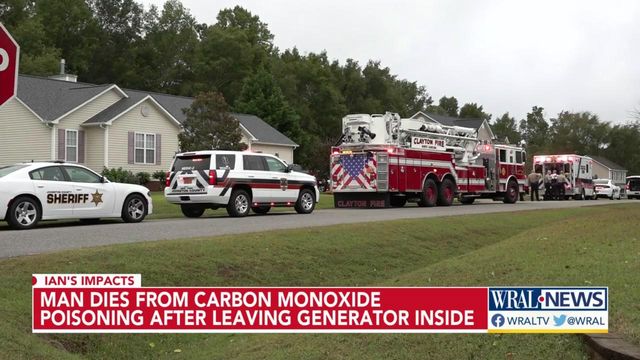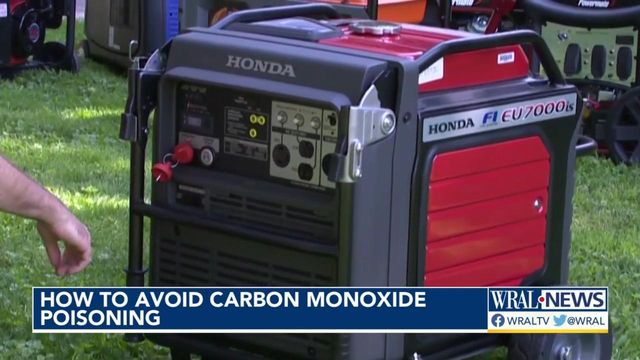'It could save your life': Clayton fire chief stresses generator safety after NC man dies from carbon monoxide poisoning
The chief said working smoke and carbon monoxide detectors are also vital.
Posted — UpdatedA Johnston County man died Saturday morning in North Carolina's first reported death related to Hurricane Ian.
The man ran a generator in his closed garage and likely died of carbon monoxide poisoning, according to the Johnston County Sheriff's Office. According to the Johnston County Sheriff's Office, the man was from New York and had recently retired in the area.
The wife is currently back home as of Saturday night, and family is also on the way to help.
While deputies were at the home in Clayton, they learned that the man's next door neighbor had a carbon monoxide alarm that was sounding off. Firefighters found that the neighbors were also running a generator in their closed garage.
That family was saved by carbon monoxide detectors.
Clayton Fire Dept Battalion Chief Mark Morris said no matter what kind of generator people have, safety has to come first.
"Everybody knows carbon monoxide is deadly," said Morris. "One of the most important things is to keep it away from your home. A good rule of thumb is around 30-40 feet away from your home."
Morris said working smoke and Carbon Monoxide detectors are also vital.
"It could possibly save your life," said Morris.
Power had been out in the neighborhood since 7 p.m. on Friday, the sheriff's office said.
Symptoms of carbon monoxide poisoning includes headache, dizziness, weakness, upset stomach, vomiting, chest pain and confusion. People who are asleep or drunk can die from the poisoning before they even present symptoms, according to the U.S. Centers for Disease and Control and Prevention.
Emergency officials say the majority of deaths from hurricanes occur after the storm, many of them associated with power outages and generators. For example, six people were killed last year by carbon monoxide poisoning in Louisiana in the days after Hurricane Ida, according to the Louisiana Department of Health.
Related Topics
• Credits
Copyright 2024 by Capitol Broadcasting Company. All rights reserved. This material may not be published, broadcast, rewritten or redistributed.






